- europages
- >
- COMPANIES - SUPPLIERS - SERVICE PROVIDERS
- >
- filter fleeces
Results for
Filter fleeces - Import export
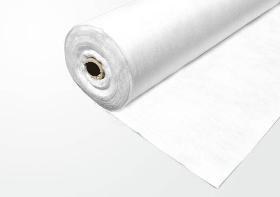
OPTIGRÜN INTERNATIONAL AG
Germany
Filter fleeces are horizontal filter layers between drainage, substrate or gravel layers. They are used to separate the various layers and prevent fine particles of the substrate from being slurried into the underlying layers.Horizontal filter layer on green roofs between drainage and substrate layers with areas with increased loads Filtration of particles from the substrate Puncture resistance 1.700 N (EN ISO 12236) Vertical water permeability 90 l/s x m² (EN ISO 11058) 10,5 bzw. 10 kN/m max. tensile strenght longitudinal/lateral
Request for a quote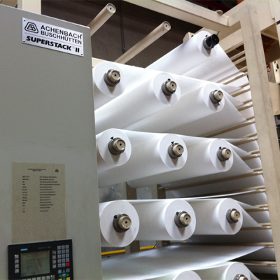
FILTERTECHNIK JÄGER GMBH
Germany
Special FTJ filter fleeces are particularly suitable as precoat or support fleece on horizontal plate pressure filters or plate filters The following precoat agents are used: Diatomaceous earth Bleaching earth Cellulose Cornmeal The FTJ nonwovens Cora®Dot and Cora®Spun effect corresponding savings on precoat agents with extremely fine filtration.
Request for a quote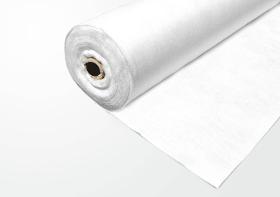
OPTIGRÜN INTERNATIONAL AG
Germany
Optigrun Filter Fleece FIL 300 is used as a filtration layer between the drainage and gravel layer on public roofs that are used by trucks and cars.Horizontal filter layer on green roofs between drainage and gravel base layer, under public areas with cars and trucks circulate, as well as pedestrians Filtration of particles from the substrate Puncture resistance 3,800 N (EN ISO 12236) Vertical water permeability 57 l/s x m² (EN ISO 11058) 21 kN/m resp. 24 kN/m max. tensile strenght longitudinal/lateral
Request for a quote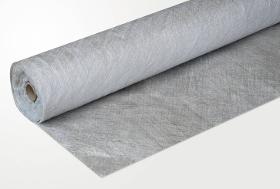
OPTIGRÜN INTERNATIONAL AG
Germany
Optigrun Filter Fleece FIL 105 is used when the drainage system needs to be protected from fine particles entering from the substrate layer.Horizontal filter layer on green roofs between drainage layer and substrate Filtration of particles from the substrate Puncture resistance 1,200 N (EN ISO 12236) Vertical water permeability 130 l/s x m² (EN ISO 11058) 7,5 kN/m max. tensile strenght longitudinal/lateral
Request for a quote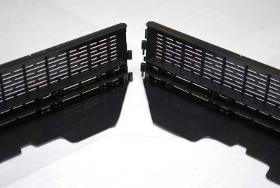
OPTIGRÜN INTERNATIONAL AG
Germany
L-section for separation of gravel and substrate. Simple installation due to click-connection system. Installed on protection membrane, drainage elements or filter fleeces; connectable to water conduit systems. For roof pitches of up to 5°.
Request for a quote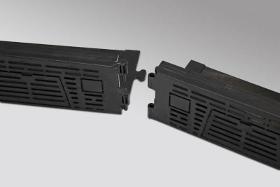
OPTIGRÜN INTERNATIONAL AG
Germany
L-section for separation of gravel and substrate. Simple installation due to click-connection system. Installed on protection membrane, drainage elements or filter fleeces; connectable to water conduit systems. For roof pitches of up to 5°.
Request for a quote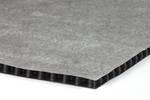
OPTIGRÜN INTERNATIONAL AG
Germany
Optigrun Protection and Drainage Board FKD 10 is used as drainage beneath frequently used pathways and on vertical building components. Incl. PP filter fleece with 75 l/m² x s flow rate (GRC 2) On roofs with a minimum of 2 % regular gradient of the sealing plane Prevents accumulation of water Without water reservoir function
Request for a quote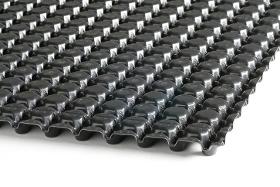
OPTIGRÜN INTERNATIONAL AG
Germany
Optigrun Drainage and Storage Board FKD 25 for use on extensive green roofs with single- or multi-layer construction and under path surfaces (can be walked on).On flat roofs up to 5 % roof pitch In a triple-layer structure with filter fleece FIL 105 and extensive multi-layer substrate E Under thin-layer pedestrian pathways in gravel beds without bedding material The large naps can face either downwards or upwards Suitable for non-pitched roofs Suitable for use on inverted roofs With water reservoir
Request for a quote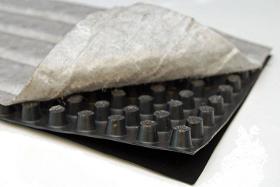
OPTIGRÜN INTERNATIONAL AG
Germany
Optigrun Protection and Drainage Board FKD 12 as a drainage element beneath traffic areas with car and truck usage, intensive green roofs, balconies and terraces.Incl. PP filter fleece with 23 l/m² x s flow rate (GRC 4) Incl. PE slip layer (friction coefficient <0,6) as first slip layer On roof surfaces with a minimum of 2 % regular gradient of the sealing plane Prevents accumulation of water CE-marked Without water reservoir funktion
Request for a quote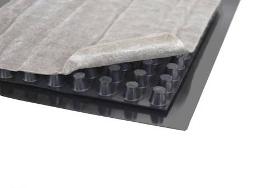
OPTIGRÜN INTERNATIONAL AG
Germany
Optigrun Protection and Drainage Board FKD 10GF under pavement areas used for walking, under vegetation areas with no need for a water reservoir but increased pressure load and vertically along ascending, filled structural components.Protection and Drainage Board incl. PP filter fleece with 100 l/m² passage capacity (GRC 2) Incl. PE film adhered on the reverse As drainage element under floor surfaces used on foot with increased frequency For vegetation areas with no need for a water reservoir but increased pressure load Vertically along ascending, filled structural components Prevents accumulation of water Without water reservoir function
Request for a quote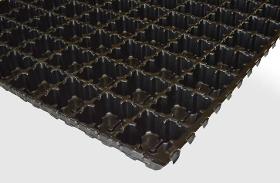
OPTIGRÜN INTERNATIONAL AG
Germany
Optigrun Drainage and Storage Board FKD 60BO under intensive roof greening in multi-layer construction and temporarily drivable gravel lawn without gravel base layer filled with Drainage Material Perl 8/16Under intensive roof greening in multi-layer construction filled with Drainage Material Perl 8/16 Under temporarily drivable gravel lawn without gravel base layer filled with Drainage Material Perl 8/16 Unfilled installation under intensive roof greening is possible with a substrate height of up to 400 mm in combination with Optigrün Filter Fleece FIL 300 (it is not possible for vehicles of any kind to drive over the unfilled Optigrün Drainage and Storage Board FKD 60BO) Suitable for non-pitch roofs Rapid draining of excess water Vapour permeable - suitable for inverted roofs Lightweight super structure with high drainage capacity Surrounding edge overlaps Filling without risk of shifting apart Cross and T-joints possible - minimal offcuts
Request for a quote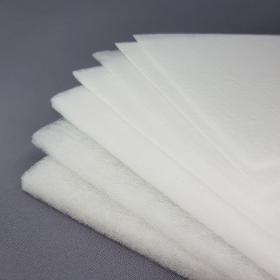
NEAUSTIMA UAB
Lithuania
Please contact the team for more information.
Request for a quote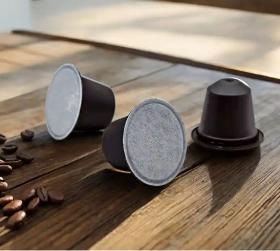
GOLDEN COMPOUND GMBH
Germany
Both the capsule and the filter fleece are certified with the OK-Home-Compost certificate of TÜV Austria. Thus, after use, the coffee grounds can help the compost to valuable fertilizer and plant soil. Empty weight: 2.2 g Filling volume: 13 cm³ Max. Coffee quantity: 6 g Foil weight: 59 g/m² or 78 g/m² The HOMEcap barrier is fully compatible with all standard Nespresso® domestic coffee machines. So there are no failures when inserting and ejecting the capsule and you benefit from the improved sealing and strong brewing performance. Do you have your own tools and want to make capsules? Contact us, we will be happy to recommend one of our compounds.
Request for a quote
F.E.S. GMBH
Germany
Vacuumfilters are used for the cleaning of contaminated cutting fluids in metal processing and rolling mill applications. Clean cutting fluids lead to longer tool life, improved surface quality of workpieces or rolled goods, and efficient heat dissipation at the processing or forming point. Advantages: Compact size Excellent filtration results Low installation effort Low maintenance requirements Affordable price Optional configuration without consumable filter fleece, with continuous filter belt, and washing device Significantly lower consumption of filter fleece compared to gravity filter systems during challenging filtration tasks and fleece operation Operating Principle: The contaminated cutting fluid flows through a piping system (1) and an inlet distributor (11) into the dirt chamber (2) of the underpressure filter tank.
Request for a quote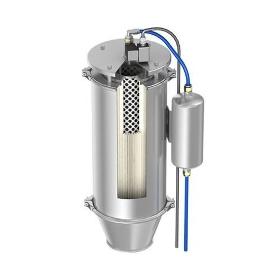
KUBOTA BRABENDER TECHNOLOGIE GMBH
Germany
— Filtering of displaced air during loss-in-weight feeder refill — Filter cartridge with filter material made of polyester fleece (conforms to FDA and GMP directives) — Trapped dust is automatically cleaned by pulses of compressed air (dust falls back into the feeder eliminating ingredient waste) — Models available for hoppers up to 1000 dm³ (35.3 ft³)
Request for a quote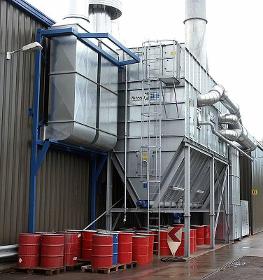
RIPPERT ANLAGENTECHNIK GMBH & CO. KG
Germany
With high-quality filter tubes and PTFE diaphragms. Paint dust filters Wet painting also results in overspray. Overspray is the solid portion of the paint that is not taken up by the workpiece. According to the purpose of use, the overspray is moist and sticky immediately after release. It is captured by the exhaust air stream in the spray booth and fed to a filter. This can be, for example, a baffle plate filter, paper filter, fleece filter, glass fibre filter or also combinations of these. The adhesive effect causes the paint particles to adhere to the contact surfaces of the respective filter medium, as a result of which a good degree of separation is achieved. However, all these filters are storage filters, i.e. the filters clog up more and more during operation and cannot be regenerated. A filter exchange becomes necessary if the exhaust air rate of the spray booth falls below the minimum. This can be very time-consuming under certain circumstances and the work process must be interrupted in order to do it. To make things worse, not only must the filtered and bound paint residues be disposed of, but also the actual filter materials. Such tooling times are not justifiable for automatic, continuous or multi-layer painting processes. Continuous procedures such as automatically cleaned filters are likewise required for this. The humidity and the adhesiveness of the particles to be filtered are thereby the problem. In order to solve this problem, the paint particles should be relieved of their adhesive capability as far as possible whilst still inside the paint booth. Our patented ‘RTS-Rotation’ system is outstandingly well suited for this. The system is comprised of slowly rotating brush rollers, which take up the adhesive paint particles on the surface of the bristles and allow them to dry there. The bristles are automatically regenerated at pre-specified time intervals by combing devices that swing in at the rear of the brush rollers. The dislodged paint residues can then be removed and disposed of either manually during work breaks or automatically during operation. The degree of separation of this system is, however, insufficient to satisfy the environmental protection requirements concerning residual dust content in the exhaust air. A further filter stage is necessary for that. It must be assumed that the paint particles arriving here are to a certain extent still damp and sticky. For this we use special paint dust filters with high-quality filter tubes with PTFE diaphragms. If necessary, precoating agents (auxiliary dust) are used in order to neutralise the adhesive capability of the particles and to keep the dust layer on the filter elements permeable to air. The precoating agent is injected into the raw air pipe by means of special dosing units. The filter tubes are cleaned by means of compressed air impulse cleaning. The use of this technology requires special know-how. We have had the appropriate experience for almost ten years. The implemented plants have capacities ranging from 5,000 to 90,000 m³ /h. Because of the large number of different paint systems, individual experiments are usually necessary in our pilot plant in order to find the correct solution for the individual case.
Request for a quote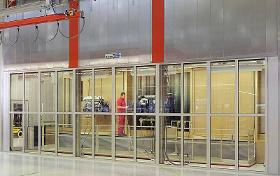
RIPPERT ANLAGENTECHNIK GMBH & CO. KG
Germany
Standard advantages: RTS-Rotation – low-maintenance dry spray booth Overspray dry separation demonstrates its strengths in practice above all when relatively large quantities of paint have to be processed and the overspray portion cannot be reduced any further. Spray booth with dry separation are usually equipped with disposable filters or manually regenerative filters. These cause costs for spare filters, maintenance and disposal. In addition to that, operation has to be interrupted in order to exchange the filters. The ‘RTS rotation’ system was developed by Rippert in order to reduce these costs and tooling times. Maintenance intervals and filter service lives are prolonged significantly in comparison with conventional systems due to the new brush pre-filtration. How the ‘RTS-Rotation’ system works Overspray separation in the RTS-Rotation system takes place by means of a pre-filter and a fine filter stage. The pre-filter stage is formed by vertical, slowly rotating brush rollers. The bristles present a very large total surface area and absorb the adhesive particles from the overspray. During the slow rotation, the paint particles can dry on the tips of the bristles. This results in slowly growing cakings on the bristles. Scrapers are mounted in the area behind the brush rollers that continuously remove these cakings from the bristles. The dislodged, hardened material falls into the drawers arranged under the brushes and can thus be simply disposed of. The dry paint dust may often be disposed of as ‘commercial waste’. The brushes otherwise require little maintenance and do not need to be exchanged or renewed. The fine filter stage is formed by a special fleece filter, which is arranged above the brush rollers and must be manually maintained or exchanged in the standard version. The maintenance intervals depend on the paint material used. Automatic cleaning or an external fine filter with automatic cleaning is also possible as an option. Over 10 years of operational experience shows that around 75 to 95% of the overspray is separated out by the pre-filter stage and the rest by the fine filter stage. The degree of separation depends strongly on the type of paint and the drying reactivity during the flying phase. Use of the RTS-Rotation with the following paints Before practical use, the paints are tested and approved in Rippert’s own pilot plant. Stove enamels and 100% UV paint systems cannot be used. The horizontal version Furthermore, it is possible to use the system as a horizontal underfloor extraction system. This version is used, for example, by a machine manufacturer for large parts. In addition, a drag conveyor with gulley extraction is used there in order to automatically transport the particles cleaned off the brushes out of the pit. Conclusion The RTS-Rotation system is particularly useful when relatively large quantities of paint with an unavoidable overspray portion have to be processed, as otherwise a great deal of residual waste would result using conventional technology. Compared to water-sprinkled spray walls and normal dry spray booths the amortisation period is shorter; it is frequently less than two years.
Request for a quoteDo you sell or make similar products?
Sign up to europages and have your products listed
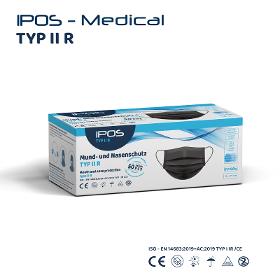
OBSEQU GMBH
Germany
Class I of Regulation EU 2017/745 on medical devices; Type II R (liquidresistant), tested according to EN 14683 2019 for surgical masks. The inside and outside are made of physiologically harmless, plasticizerfree polypropylene fleece, the filter medium consists of a special microfiber fleece produced using the meltblown process, welded together using the ultrasound process.
Request for a quote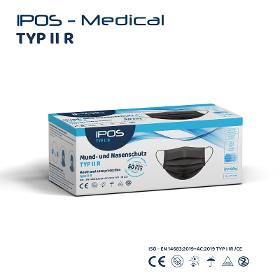
OBSEQU GMBH
Germany
Class I of Regulation EU 2017/745 on medical devices; Type II R (liquidresistant), tested according to EN 14683 2019 for surgical masks. The inside and outside are made of physiologically harmless, plasticizerfree polypropylene fleece, the filter medium consists of a special microfiber fleece produced using the meltblown process, welded together using the ultrasound process.
Request for a quote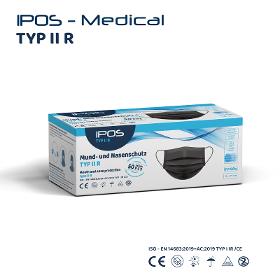
OBSEQU GMBH
Germany
Class I of Regulation EU 2017/745 on medical devices; Type II R (liquidresistant), tested according to EN 14683 2019 for surgical masks. The inside and outside are made of physiologically harmless, plasticizerfree polypropylene fleece, the filter medium consists of a special microfiber fleece produced using the meltblown process, welded together using the ultrasound process.
Request for a quote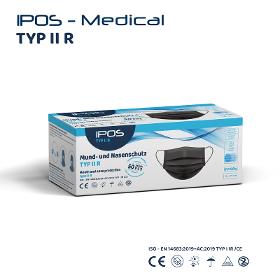
OBSEQU GMBH
Germany
Class I of Regulation EU 2017/745 on medical devices; Type II R (liquidresistant), tested according to EN 14683 2019 for surgical masks. The inside and outside are made of physiologically harmless, plasticizerfree polypropylene fleece, the filter medium consists of a special microfiber fleece produced using the meltblown process, welded together using the ultrasound process.
Request for a quote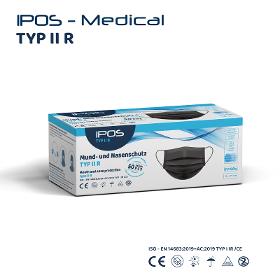
OBSEQU GMBH
Germany
Class I of Regulation EU 2017/745 on medical devices; Type II R (liquidresistant), tested according to EN 14683 2019 for surgical masks. The inside and outside are made of physiologically harmless, plasticizerfree polypropylene fleece, the filter medium consists of a special microfiber fleece produced using the meltblown process, welded together using the ultrasound process.
Request for a quote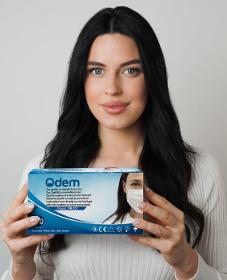
BETTER AG
Switzerland
Our IIR Odem Medizer disposable medical masks are three-layer masks made of high-quality filter fleece. They provide skin-friendly, comfortable and medically proven bacterial filtration. Thanks to the integrated, mouldable metal nose clip and user-friendly rubber ear loops, the mask easily adapts to any face shape. The masks are CE certified to EN 14683:2019+AC:2019 standard. The disposable type IIR masks are packed in 50 piece packs and can be easily removed from the box. Information: Manufacturer: Odem, Model: MB001 3-ply disposable mask, hygienic mask, protective mask type II, standard: EN 14683:2019+AC:2019, high wearing comfort, hygienically packed. Technical data Size: 17,5 x 9,5 cm Weight: 4g per mask Plastic packaging 50 pieces Protection class: Type IIR Certification: CE Standard: EN 14683:2019+AC:2019
Request for a quote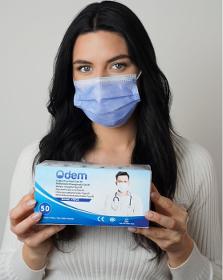
BETTER AG
Switzerland
Our IIR Odem Voinmed disposable medical masks are three-layer masks made of high-quality filter fleece. They provide skin-friendly, comfortable and medically proven bacterial filtration. Thanks to the integrated, mouldable metal nose clip and user-friendly rubber ear loops, the mask easily adapts to any face shape. The masks are CE certified to EN 14683:2019+AC:2019 standard. The disposable type IIR masks are packed in 50 piece packs and can be easily removed from the box. Information: Manufacturer: Odem, Model: VN102 3-ply disposable mask, hygienic mask, protective mask type II, standard: EN 14683:2019+AC:2019, high wearing comfort, hygienically packed. Technical data Size: 17,5 x 9,5 cm Weight: 4g per mask Plastic packaging 50 pieces Protection class: Type IIR Certification: CE Standard: EN 14683:2019+AC:2019
Request for a quote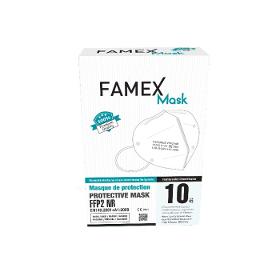
BETTER AG
Switzerland
Protection class: CE certified FFP2 masks have a filtering performance of 94%. Better protected: These FFP2 masks have no valve, when you inhale and exhale the air is filtered. Product description: The mask filters over 94% of aerosols containing water and oil, as well as fine dust, viruses, etc. Meiyi's respirator made of high efficiency micro filtration filter fleece, guarantees a high level of filtration of 94 per cent of particles as small as >0.3 microns in the air. Intended for single use, the FFP2 respirator from Meiyi is tested and CE certified. Information: Manufacturer: Fago Med, Model: Fago S101. Protection class FFP2, CE-certified Standard: EN 149:2001+ A1:2009, hygienic Single packaging, high wearing comfort Technical data: Size: 115×115 Weight: 10g per mask Individually packed 10 masks (pieces) per box Protection class: FFP2 Certification: CE Standard: EN 149:2001+ A1:2009
Request for a quote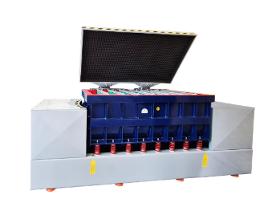
ASSFALG GMBH
Germany
The trough vibratory finishing machines are ideally suited for elongated individual parts and small series. Their advantages lie in the machining of heavy, bulky as well as long workpieces and in the contact-free working of sensitive individual parts in chambers. A soundproof cover reduces the noise level and makes working in a workshop possible. The clockwise and anti-clockwise rotation as well as the speed control from 1,200 to 1,500 rpm ensure a wide range of machining options. The unmanned working process is rounded off by the programmable timer. The system can be expanded with an optionally available paper filter and separator. For simple and convenient water treatment, we recommend a paper filter or a fully automatic water treatment system. The process water is pumped into the trough in doses and cleaned in the return flow via a filter fleece or the centrifugal force.
Request for a quoteResults for
Filter fleeces - Import exportNumber of results
27 ProductsCountries
Company type
Category
- Medical fabrics (6)
- Drainage systems and equipment (5)
- Masks, safety (3)
- Thermal insulation materials (3)
- Steel, special (2)
- Air purification - equipment and systems (1)
- Filtering equipment and supplies (1)
- Finishing of surfaces - machinery (1)
- Industrial equipment hire (1)
- Oilseed crops (1)
- Technical textiles for industrial applications (1)